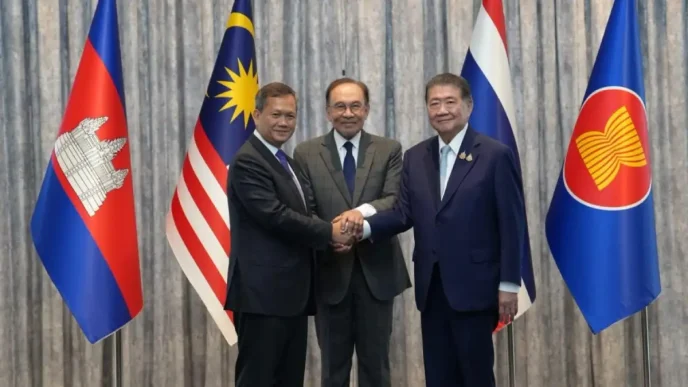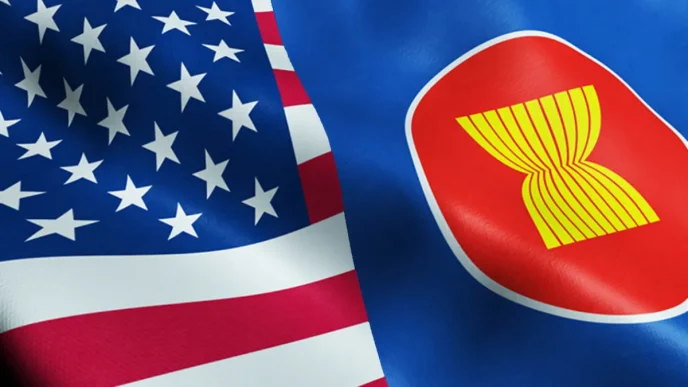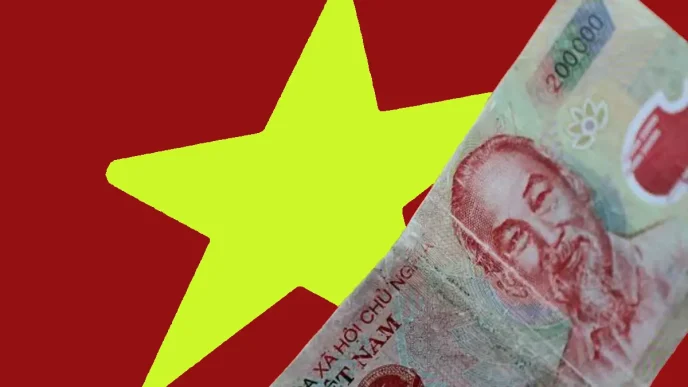Vietnam and New Zealand have elevated their diplomatic ties to a Comprehensive Strategic Partnership, marking a significant milestone as the two nations celebrate 50 years of bilateral relations. The announcement came during a joint press conference in Hanoi on Wednesday, following high-level talks between Vietnamese Prime Minister Phạm Minh Chính and his New Zealand counterpart, Christopher Luxon, who was on an official visit to Vietnam.
This upgrade positions New Zealand as Vietnam’s 10th Comprehensive Strategic Partner, reflecting a deepening of political trust and a commitment to broader cooperation across multiple sectors. The historic decision, made against the backdrop of the 2nd ASEAN Future Forum 2025, signals a new chapter for both countries, with implications for regional stability and global cooperation.
A Milestone in Bilateral Ties
Prime Minister Phạm Minh Chính hailed the visit and the partnership upgrade as a “special significance,” noting the timing with the golden jubilee of diplomatic relations between Hanoi and Wellington. He described the discussions with Luxon as open, frank, and sincere, underpinned by mutual understanding. After five decades of ties, including 16 years as Comprehensive Partners and five as Strategic Partners, the two leaders agreed that their relationship had reached a level of maturity warranting this elevation.
“This new partnership will strengthen political trust and deepen cooperation,” PM Chính affirmed, stressing that it is built on respect for international law, sovereignty, territorial integrity, and each nation’s political systems. He underscored the potential for the upgraded ties to contribute to peace, stability, and development both regionally and globally.
For his part, PM Luxon reiterated New Zealand’s commitment to deepening engagement with Vietnam, expressing optimism for greater achievements in the near future. Reflecting on the past 50 years, he highlighted the alignment of milestones with the shared interests of both nations, and noted New Zealand’s growing involvement with ASEAN, a regional bloc in which Vietnam plays a coordinating role for Wellington’s relations.
Five Pillars of Enhanced Cooperation
The Comprehensive Strategic Partnership framework outlines five key areas for enhanced collaboration. First, political trust will be elevated to a higher strategic level, fostering closer alignment on bilateral and multilateral issues. Second, defence and security cooperation will become more substantive, with Luxon announcing plans for a New Zealand naval vessel to visit Vietnam later this year, a move that could bolster maritime security dialogues.
Economic, trade, and investment ties form the third pillar, with both leaders keen to build on recent successes. Bilateral trade has surged by 40% over the past five years, and Luxon praised Vietnam’s remarkable economic growth, identifying it as an attractive destination for investment. Progress in supply chain connectivity, investment facilitation, and business partnerships—particularly in agriculture, fisheries, and renewable energy—was acknowledged as a foundation for future growth. Maritime cooperation, education, and defence were also flagged as promising areas for expansion.
Science and technology, alongside climate change response, constitute the fourth pillar, emerging as new frontiers for collaboration. This focus aligns with global priorities and the shared challenges faced by both nations in addressing environmental sustainability. Finally, people-to-people exchanges will be strengthened through initiatives in human resource development, labour, and tourism. Both leaders encouraged the establishment of direct flights, with Vietnam’s Vietjet already launching a route to facilitate connectivity.
During the visit, the two prime ministers witnessed the signing of eight cooperation agreements, ranging from climate change collaboration to digital transformation in healthcare. Notable among these was a donation of high-flow oxygen therapy machines worth VNĐ1 billion (US$39,000) from New Zealand’s Fisher & Paykel Healthcare to Hanoi’s Bạch Mai Hospital, alongside a VNĐ120 billion (US$4.7 million) partnership for healthcare service enhancement between FV Hospital Vietnam and Orion/McCrae Hospital. Other agreements covered doctoral training for Vietnamese lecturers, environmentally friendly agricultural chemicals, and fifth freedom traffic rights for airlines.
Regional and Global Implications
Beyond bilateral gains, the partnership carries broader significance for the Indo-Pacific region. Both leaders reaffirmed their commitment to coordination and mutual support at multilateral forums, notably within the United Nations, ASEAN, and ASEAN-led mechanisms. They stressed the importance of dialogue, trust-building, and upholding ASEAN’s central role in shaping regional architecture.
A key point of alignment was on maritime security in the South China Sea, referred to as the East Sea by Vietnam. The two prime ministers emphasised the need for peace, stability, security, and freedom of navigation and overflight in the region, advocating for the peaceful resolution of disputes under international law, particularly the 1982 United Nations Convention on the Law of the Sea (UNCLOS). Their shared vision is to transform the South China Sea into a zone of peace, friendship, and development—an aspiration that could influence regional dynamics if pursued through sustained cooperation.
Vietnam’s role as the coordinator of ASEAN-New Zealand relations adds another layer of importance to this partnership. PM Chính pledged to advocate for an upgraded ASEAN-New Zealand framework, which could amplify mutual benefits and contribute to regional and global peace. Luxon, in turn, expressed gratitude for Vietnam’s invitation to the ASEAN Future Forum, describing it as a platform to discuss a resilient and prosperous ASEAN—a vision shared by both nations.
Economic and Social Dimensions
The economic dimension of this partnership cannot be overstated. Vietnam’s rapid development has made it a key player in Southeast Asia, and New Zealand’s expertise in agriculture, technology, and renewable energy offers complementary strengths. Luxon’s recognition of Vietnam’s progress in supply chain connectivity and investment facilitation points to a relationship that could serve as a model for small-to-medium economies engaging with emerging markets.
However, challenges remain. While trade has grown significantly, barriers such as regulatory differences and market access issues could temper the pace of economic integration. If addressed through the new partnership framework, these hurdles may be mitigated, though outcomes remain speculative at this stage and require further policy alignment. Analysts suggest that sustained dialogue on trade facilitation and investment protection will be critical to realising the full potential of this economic pillar.
On the social front, strengthening people-to-people ties holds immense promise. Initiatives in education, such as scholarship opportunities for Vietnamese students in New Zealand, and tourism, bolstered by direct flight connectivity, could foster greater cultural understanding. Luxon’s emphasis on these connections as “crucial” for expanding cooperation reflects a long-term vision of mutual benefit, though the scale of impact will depend on implementation and public uptake.
A Shared Vision for Stability
At its core, the Vietnam-New Zealand Comprehensive Strategic Partnership is underpinned by a shared commitment to a peaceful, stable, and prosperous Indo-Pacific. Luxon’s reiteration of New Zealand’s dedication to this vision, coupled with plans for enhanced defence and security dialogues, suggests a proactive approach to regional challenges. Yet, the effectiveness of such measures—particularly in sensitive areas like maritime security—remains contingent on broader international support and adherence to legal frameworks like UNCLOS. Without wider regional buy-in, initiatives may face limitations, a point that both leaders appear to acknowledge through their emphasis on multilateralism.
For Vietnam, this partnership reinforces its strategic positioning within ASEAN and beyond, balancing relations with major powers while deepening ties with like-minded nations like New Zealand. For Wellington, it offers a gateway to greater engagement with Southeast Asia, a region of growing geopolitical and economic importance. If nurtured, this relationship could serve as a stabilising force amid global uncertainties, though its long-term impact hinges on consistent follow-through.
As Vietnam and New Zealand embark on this new phase, the Comprehensive Strategic Partnership stands as a testament to the power of sustained diplomacy. PM Chính’s assertion that the framework will enable “practical, effective, and sustainable cooperation” reflects optimism for tangible outcomes, while Luxon’s commitment to working closely with his Vietnamese counterpart signals a personal investment in the relationship’s success.
The agreements signed during this visit—from climate change to healthcare—demonstrate the breadth of ambition, yet their implementation will be the true test. If the past 50 years are any indication, the foundation exists for a robust partnership. Whether it can navigate future geopolitical complexities and deliver on its promises remains to be seen, but for now, Hanoi and Wellington have set a high bar for bilateral cooperation in the Indo-Pacific.














